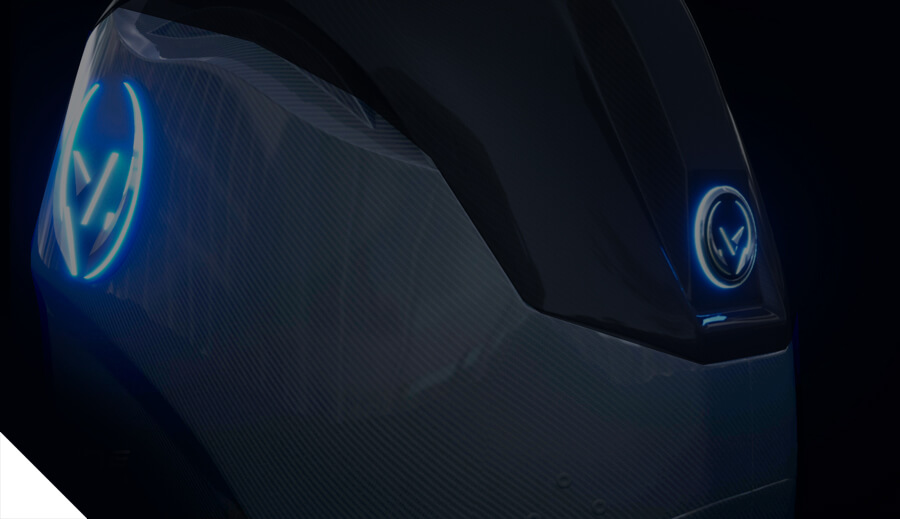


Like Tesla On The Water? It's Not As Crazy As It Sounds...
StreetAuthority - February 24, 2022 - Nathan Slaughter
Nothing like a six-hour flight delay to make you appreciate the comforts of home.
Technically, it was delays. Plural. We boarded the first time and sat on the tarmac for a couple of hours due to a mysterious mechanical issue that couldn’t be resolved. I deplaned, went back inside the terminal, and was informed by gate agents that a replacement Boeing 777 was on its way from the hanger. Later, we were herded back into the new plane, buckled in, and then… nothing.
The flight crew (probably just as impatient as the passengers) said it would be a few minutes longer for catering. But we spent 30 more minutes on the ground, then 60, then 90. Finally, the Captain said we could wait no longer for catering and must depart because his federally-mandated duty time was about to expire.
I must admit, this would have been my first peanut-related flight cancellation. By this point, most of us had missed our connecting flights at Charlotte Douglas. Fortunately, after four hours’ sleep in the airport Radisson, the rest of the return trip went smoothly.
The travails were well worth it.
I had made the trip down to attend the Miami International Boat Show, an annual affair where manufacturers of all shapes and sizes show off their wares and hopefully make a few sales. The cavernous convention center showroom was filled with hundreds of center-console offshore fishing vessels, luxurious cabin cruisers, sleek racers, and all kinds of other expensive toys.
What If There Was A Tesla For Boats?
Sadly, I don’t have the budget for a pleasure yacht. But then again, I wasn’t there to shop. I wanted to check out an innovative new company that is making waves (no pun intended) in the marine world. I had seen articles in trade journals like Power & Motor Yacht magazine, which led me to a few YouTube videos.
But that’s not the same as experiencing this groundbreaking (some say revolutionary) technology first-hand. Look, if you want to know what a new restaurant is all about, you can either read a few newspaper reviews or sit down at a table and taste one of the chef’s creations for yourself.
I’ve seen more investor presentations than I can count. Some companies try to dazzle you with a series of colorful charts, graphs, and financial projections. Others get into dense discussions about patents and intellectual property rights. Or name-drop a few deep-pocketed clients. Or outline progress on big strategic initiatives.
This presentation lasted all of five minutes and included none of that. Not a single powerpoint slide. It consisted of little more than a simple welcome and an invitation to get out on the water for a test drive.
When the product speaks for itself, that’s all you really need.
That’s what helped Tesla build a trillion-dollar electric empire and win over the skeptics. Today’s recommendation is trying to forge a similar path — just over lakes and oceans rather than streets and highways. And with a nano market cap of $50 million, it could double in value and still be just one-ten thousandth the size.
There’s something to be said about getting in on the ground floor. Meet Vision Marine (Nasdaq: VMAR).
New Portfolio Addition
Vision Marine Technologies (Nasdaq: VMAR)
Company Name: Vision Marine Technologies (VMAR)
Industry: Recreational Vehicles
Market Cap: $53 M
Annual Revenue: $4.46 M (ttm)
52-Week Price Change -42%
You don’t need to attend an international boat show to know that outboard engines are generally getting larger and more powerful. Where 250 horsepower used to be the industry standard, you now see souped-up V8 engines with 450 horsepower that weigh 700 pounds. And there might be three or four attached to a single transom.
These engines are built for power and torque and speed. Unfortunately, even with improved efficiency, they also guzzle gasoline. Fittingly, the first thing I noticed while driving to the Miami harbor was a gas station advertising regular unleaded for $4.79 per gallon. Premium grade was north of $5. And you can bet that fuel prices on the water are higher — they always are.
I wonder if Vision Marine execs smirk every time they drive past. You see, the company has just developed the most powerful electric outboard engine. Others tinker around in this field, but existing models are limited by short range and low speeds. They are a curiosity, not much more.
Built on years of research, Vision Marine has made a commercial breakthrough. The new E-Motion 180E engine converts power stored in a small bank of lithium batteries into 180-horsepower for clean and pure water-borne adrenaline.
Source: VMAR Investor Presentation
While range varies with boat size, the engine can generally cruise around at 17-knots for up to four hours on a single charge. That’s about 75 miles per hour. And if you’ve got a skier or tuber in tow, it can sling them around the lake at even faster speeds.
At a national competition on Missouri’s Lake of the Ozarks last September, the E-Motion motor clocked a top speed near 50 miles per hour, shattering the previous world record. The company has since teamed up with Hellkats Powerboats for a twin-mounted catamaran that may potentially break 100 mph.
I got the privilege of cruising around Biscayne Bay on one of these engines. I’ve been on the water since the age of 2 and have rarely seen a boat accelerate and get on plane so effortlessly. It was also a smoother ride, with less vibration. And keep in mind, this was a tritoon, not a v-hull ski boat. But there was one thing missing: the noise. The electric engine is whisper quiet, without the high-pitched whine that drowns out music and conversation on most boats.
Until now, underwhelming performance has been one of the biggest obstacles standing in the way of widespread adoption. Vision Marine has cleared that barrier. Better still, it has done so without the need for specialized (read “costly”) charging equipment. The battery can be plugged into any ordinary 220-volt outlet at the marina.
Analyzing The Prospects…
These engines aren’t cheap (neither are electric vehicles, for that matter). I’ve seen quotes around $75,000. But that additional upfront expense can be recouped with a lifetime of gas savings – not to mention less maintenance. Since there are no moving parts, these engines don’t require routine oil changes. And with battery technology efficiency improving, the cost differential should narrow over time.
In the meantime, Vision Marine continues to attract attention by expanding its rental fleet. The company operates recreational facilities in California and Florida that rent out electric boats for a fun day on the water. This ancillary operation accommodated 13,000 customers last year, generating more than $4 million in high-margin revenue.
But that’s just a side venture.
While estimates vary, some analysts are projecting the global electric outboard engine market to triple from $4.5 billion in annual revenues today to $12.3 billion by 2027. I’ve seen more optimistic forecasts of $17 billion by 2025. Even at the low-end, Vision Marine would only need a tiny sliver of that to turn cash flow positive and dramatically expand the bottom line.
And it has a valuable first-mover advantage – it’s the only electric boating company to be listed on the Nasdaq. Sales are still modest, but we are in the nascent stages of this shift. To give you an indication of future demand, the company recently ran a promotion for pre-orders and was swamped with 100 times normal website traffic, which crashed servers.
Meanwhile, management has recently signed a large-scale production and supply agreement with McLaren Engineering (yes, the same guys known for their luxury automobiles). That will effectively outsource large-scale manufacturing, which can be capital intensive.
It’s no coincidence that several of the senior execs come from this same background. At the conference, I was fortunate to meet newly-appointed Chief Operating Officer Xavier Montagne, who previously helped design the electric powertrain for Renault Formula E race cars. We had a delightful dinner conversation, despite the language barrier (he’s from Paris).
On that subject, let’s not forget that this market is not limited to American consumers. If anything, we are behind the curve. Many European markets are also pushing through more aggressive regulatory reforms, restricting internal combustion engines on lakes and rivers – and hastening the transition to electric boats.
By letting someone else do the heavy lifting, Vision Marine won’t have to saddle the balance sheet with piles of debt to execute its vision. Nor will it need to dilute existing stockholders (one of the first questions I asked). Quite the opposite, in fact. The board has just authorized a stock repurchase plan, and there are only 8 million shares outstanding.
A Glimpse Into The Future
Looking ahead, there are several catalysts in play, not the least of which is the strong post-Covid migration out of crowded cities and into rural areas. Recreational boat makers have full order books and growing backlogs, and they are taking notice of electric alternatives.
The National Marine Manufacturers Association is anticipating double-digit growth in outboard engine sales volume over the next few years, with a pronounced shift from gas to electric for popular lines of pontoon boats, deck boats, and other watercraft. Vision Marine is at the vanguard, having already won the business of builders and development partners. Most recently, Limestone ordered dozens of units with plans for more.
With all respect to Limestone (a fine outfit), there are likely bigger deals on the horizon with better-known manufacturers such as Polaris or Mastercraft. You can imagine the market response if they come knocking.
It wouldn’t surprise me to see engine giant Mercury, a subsidiary of Brunswick, beat them to the punch. While Mercury has dabbled in emission-free electric engines, Vision Marine’s high-performance prototype is far more advanced and has a much broader potential customer base. An acquisition would be the cheapest way for Brunswick to gain control of this proven technology – not just for its own use, but to strategically keep it out of rivals’ hands.
Action to Take
VMAR shares took a hit during the pandemic, in part because of the cancellation of boat shows. But they have rallied sharply in recent weeks and should return to double-digit territory.
I rate the stock a strong buy at this level and will be adding it to my portfolio.
Regards,
Nathan Slaughter
Chief Investment Strategist, Takeover Trader













